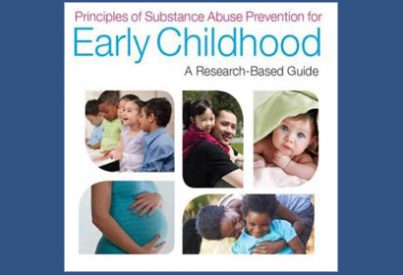News
New NIDA guidelines highlight first eight years of life in preventing substance abuse

Substance use usually begins in adolescence, but may be rooted in developmental changes that occur as early as the prenatal period. Psychological, biological, social, and environmental factors, which start influencing a child even before birth, can converge with genetic makeup to put a child at risk for later substance use and mental health issues.
The National Institute on Drug Abuse (NIDA) has released an online guide highlighting early childhood interventions that can help prevent substance use and other unhealthy behaviors. Based on research examining factors that can build resiliency or increase risk, the evidence-based guide emphasizes the impact of the first eight years of a child’s life on later behavior.
When it comes to the question of who will develop substance use issues, genetics are only part of the picture. Family and home environments strongly influence a child’s early development and socialization, affecting levels of risk or resiliency. Rapid growth and change in the brains of children and adolescents make them particularly sensitive to environmental influence. For this reason, the earlier a positive intervention occurs, the greater the opportunity to impact development in a healthy and positive way.
Decades of prevention research has shown that factors such as a lack of school readiness skills, insecure attachment, and signs of uncontrolled aggression (as early as age two) can negatively affect behavior in later life, including drug use. A stable home environment, warm and supportive parenting, adequate nutrition, cognitive and physical stimulation, and good classroom management in early childhood (prenatal through age 8) promote the development of emotional and behavioral control and contribute to positive developmental outcomes. They also serve as protective factors against drug use and other behavioral problems.
Principles of Substance Abuse Prevention for Early Childhood, created for parents, practitioners, and policymakers, is a guide detailing specific interventions designed for early childhood that help mitigate risk factors by building on existing strengths of both child and parent (and other caregivers). It introduces skills (such as general parenting skills and specific skills to manage a child’s aggressive behavior) and problem-solving strategies for areas in need of improvement (such as improving self-concept, managing oneself responsibly, and getting along with others).
The guide begins with a list of seven principles specifically addressing how early interventions can positively affect development. It follows with “Why is Early Childhood Important to Substance Abuse Prevention?” and continues with the following sections:
- Risk and Protective Factors : Provides an overview of child development from the prenatal period through age 8 and factors that either help protect or put a child at risk for later substance use.
- Intervening in Early Childhood: Describes early childhood interventions that target individual, family, school, and community precursors of drug use, abuse, and addiction.
- Research-Based Early Intervention Substance Abuse Prevention Programs: Includes information on specific early childhood intervention programs for which the National Institute on Drug Abuse (NIDA) has provided research support.
- Selected Resources: Provides links to federal agencies, professional and academic organizations, and non-governmental agencies that engage in early-childhood-prevention–related initiatives.
There are also two appendices for policymakers, researchers, and practitioners which go into greater detail on how early childhood interventions are designed and how to select the right intervention for a community’s specific needs.
“Thanks to more than three decades of research into what makes a young child able to cope with life’s inevitable stresses, we now have unique opportunities to intervene very early in life to prevent substance use disorders,” said NIDA Director Nora D. Volkow, M.D. “We now know that early intervention can set the stage for more positive self-regulation as children prepare for their school years.”
“This guide is important reading for anyone who has an influence over a child’s life, from early development through the transition to elementary school,” added Volkow.